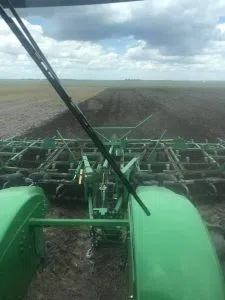
By Illinois Radio Network
SPRINGFIELD – A wet spring in 2019 led to late planting of corn and soybeans across Illinois, and the U.S. Department of Agriculture reported production declined from 2018 in all regions and most counties of the state.
Things are looking up a little for 2020, though, Reid Thompson, a farmer who grows both crops, said.
For one thing, he said, the winter months – December, January and February – were unusually warm and dry, making it possible for farmers to till fields and prepare them for planting earlier than normal. When the anticipated wet spell ends, farmers will be able to move directly to planting.
“We really had a favorable end of the year, where we were able to get the tillage passes done timely; we actually used a fall herbicide to control our spring weeds,” he said of work on his McLean County farm.
The warmer weather, he said, meant “the rains and the moisture we did get, we absorbed it all – we didn’t have it wash away like we did in spring 2019.” That year, he said, big rains on the partially frozen ground caused numerous problems that are not expected this year.
“I would never say we’ll have a perfect season,” he said. Of 2020, “I’m not going to say we’re going to reset records like we did in 2018, but I think the expectation is to be at least 10 to 20 percent better than a year ago.”
That does not necessarily translate into a better financial year for farmers, he said.
“The biggest concern now as you look at the market … it takes more bushels right now to maintain the same gross dollar amount. Most of our inputs are paid for and fixed for the year, so the higher potential production we have, the lower the price typically will go. So you really have to be on top of managing that downside risk,” he said.
Illinois Radio Network can be reached at News@WJBC.com.





